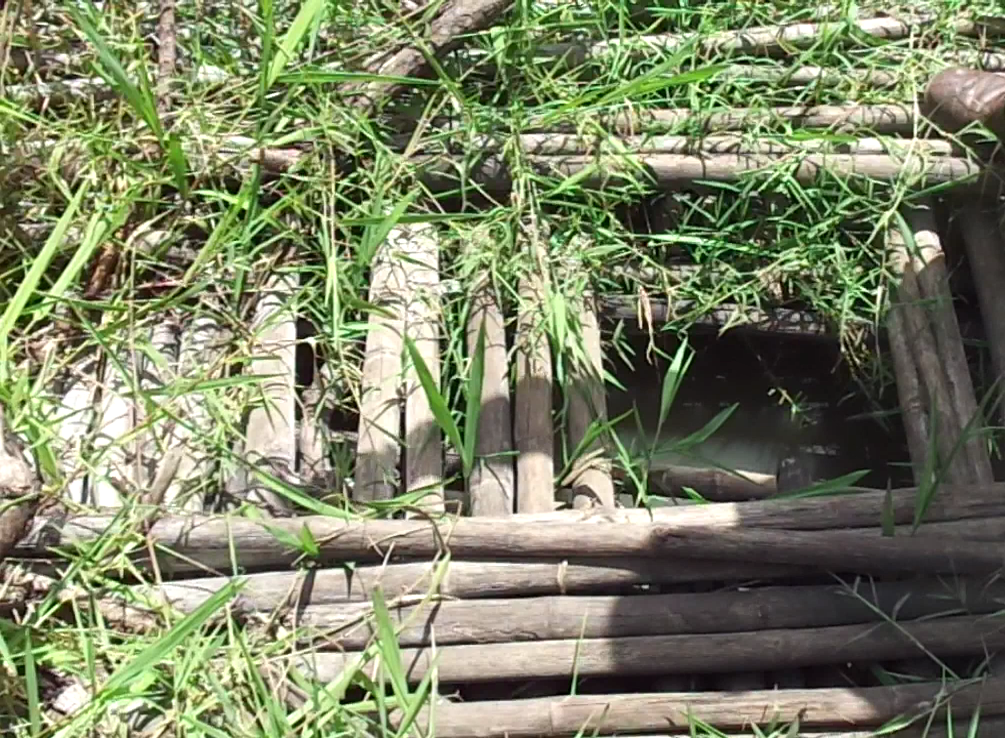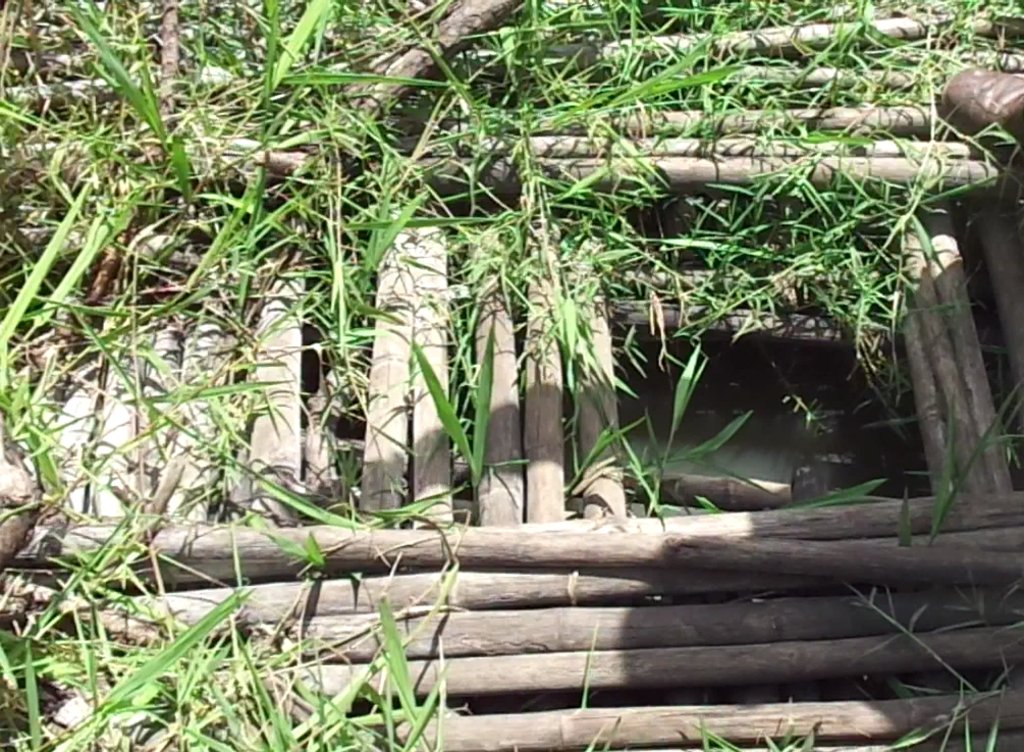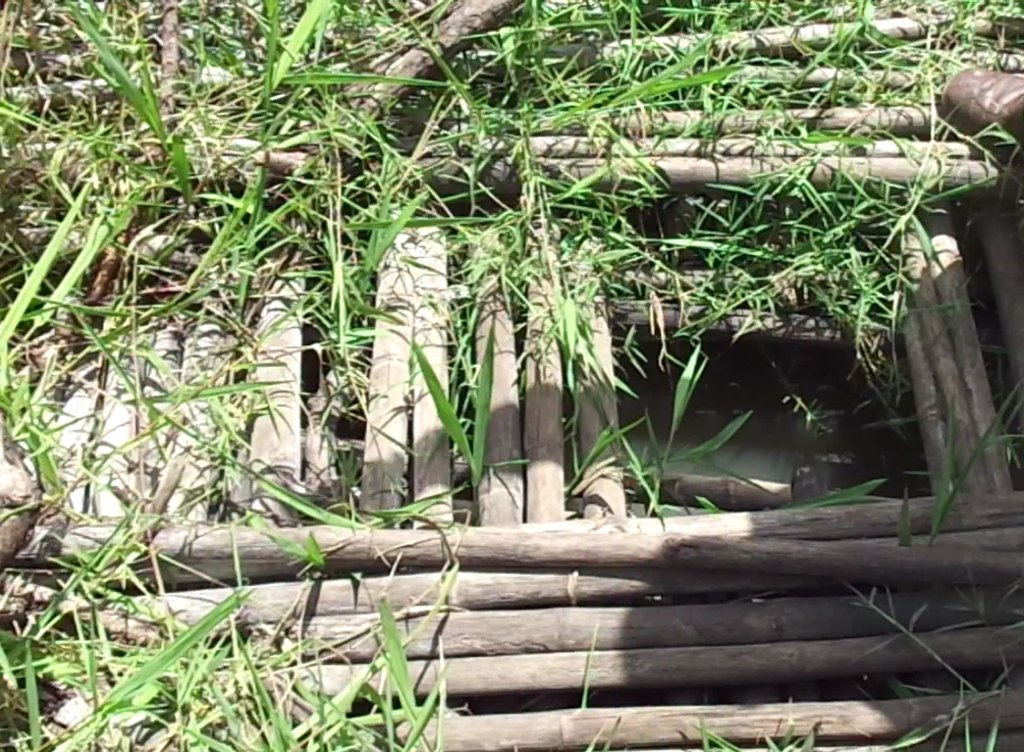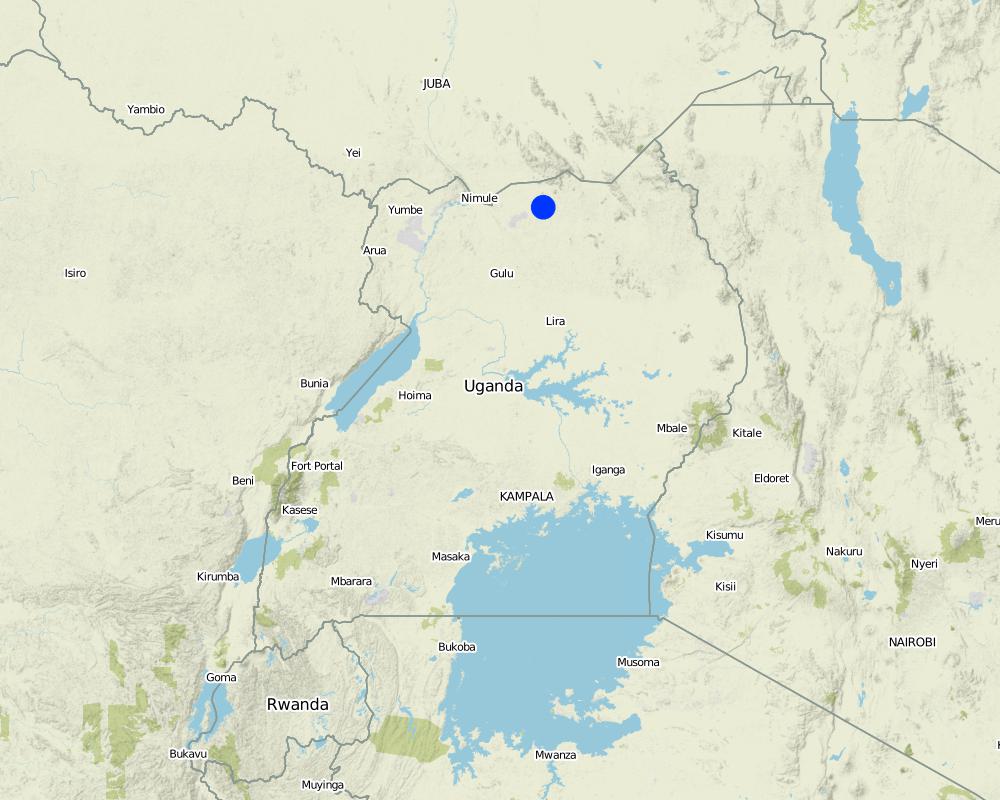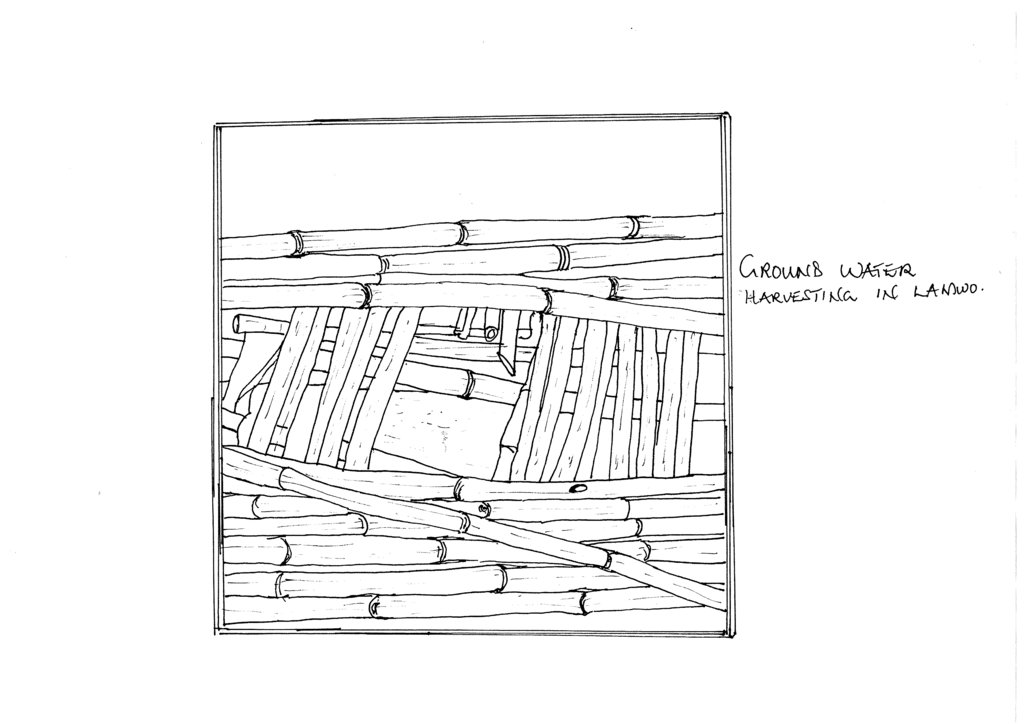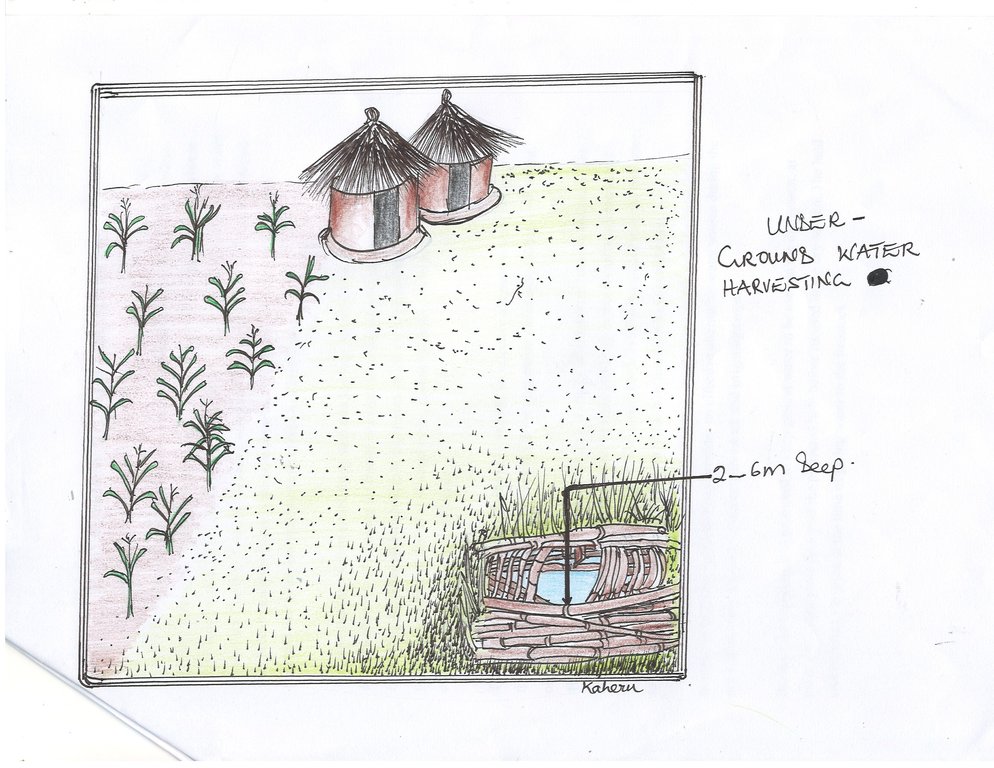Under ground water abstraction for livestock production [Uganda]
- Creation:
- Update:
- Compiler: Kamugisha Rick Nelson
- Editors: Bernard Fungo, JOY TUKAHIRWA
- Reviewers: Rima Mekdaschi Studer, Stephanie Jaquet, Renate Fleiner, Nicole Harari, Drake Mubiru, Donia Mühlematter, Hanspeter Liniger
IET
technologies_2304 - Uganda
- Full summary as PDF
- Full summary as PDF for print
- Full summary in the browser
- Full summary (unformatted)
- Under ground water abstraction for livestock production: May 22, 2018 (inactive)
- Under ground water abstraction for livestock production: July 16, 2018 (inactive)
- Under ground water abstraction for livestock production: March 22, 2019 (inactive)
- Under ground water abstraction for livestock production: Aug. 11, 2019 (public)
View sections
Expand all Collapse all1. General information
1.2 Contact details of resource persons and institutions involved in the assessment and documentation of the Technology
Key resource person(s)
SLM specialist:
Obita Churchill
Ayom village savings group
Ayom village, Ywaya parish, PADIBE west sub-county, Lamwo District
Name of project which facilitated the documentation/ evaluation of the Technology (if relevant)
Scaling-up SLM practices by smallholder farmers (IFAD)Name of the institution(s) which facilitated the documentation/ evaluation of the Technology (if relevant)
Centre Ecologique Albert Schweitzer (CEAS) - Switzerland1.3 Conditions regarding the use of data documented through WOCAT
When were the data compiled (in the field)?
12/05/2017
The compiler and key resource person(s) accept the conditions regarding the use of data documented through WOCAT:
Yes
1.4 Declaration on sustainability of the described Technology
Is the Technology described here problematic with regard to land degradation, so that it cannot be declared a sustainable land management technology?
No
2. Description of the SLM Technology
2.1 Short description of the Technology
Definition of the Technology:
Waterhole is excavated for abstracting underground water for watering livestock as well as irrigating crops during the dry season.
2.2 Detailed description of the Technology
Description:
Underground water abstraction is done by excavating a pit hole in the ground fixed and protected against collapse to reach water underground . A hole measuring 2-6 m deep , 2 m wide and 3 m long is manually dug in the ground/ soil and established far distant from the homes and near the streams to allow water to collect and come up . The hole is shaped in such a way that water does not flow out, and the top is covered to keep the water in the hole protected from contamination. The opening is covered with local materials like poles, bamboo stems (Bamboo aridinarifolia), etc. Water flows into the hole through various methods of groundwater recharge such as open wells, soak pits, and recharge shaft/ trench.
The activities involved in establishing such a underground water hole include (1) identifying suitable site for digging the hole, (2) looking for trainer or expert to advise on how to dig and cover the hole, (3) looking for labor, and tools (e.g. hoes, spades, poles, etc.), (4) digging the hole to a depth of about 2-6 m, de-pending on the level of water table, (5) protect the hole with bamboo or wood to ensure hygiene and from people falling in.
---
The returns derived from this technology include: an effective alternative water source during the dry season which is used for crop irrigation (e.g. maize – Zea mays; cabbage - Brassica oleracea) and for livestock production/ watering.
This technology is most preferred because it is cheap, affordable and easy to maintain. The only costs are at the establishment phase. Its main challenge is that it can be contaminated when managed poorly if animals are allowed to close to the hole. To ensure this, the farmer needs to keep in contact with the extension agent to ensure maximum proper management of the hole to minimize contamination.
In terms of impacts, the technology provides an effective alternative water source during the dry season, which is used majorly for livestock and irrigating crops.
Because the technology is promoted as a supplementary water source for the dry season, during the wet season grass may grow on top of the protected hole. Before its use in the dry season the land user removes the grass before abstracting the well water for crop production and 5 heads of livestock kept in distance of 50 m-100 m from the well.
2.3 Photos of the Technology
General remarks regarding photos:
The grass left to grow does not imply poor management but a protection for a longer period leading to dry season when there is shortage of water.
2.4 Videos of the Technology
Comments, short description:
Video showing underground water abstraction for animal production using : A deep hole is dug and covered with wood and bamboo to provide water for livestock during the dry season.
Date:
12/05/2017
Location:
Ayom Village, Nyaya parish, Padibe West Sub-county, Lamwo District.
Name of videographer:
Issa Aiga
2.5 Country/ region/ locations where the Technology has been applied and which are covered by this assessment
Country:
Uganda
Region/ State/ Province:
Nothern Region
Further specification of location:
Lamwo
Comments:
Map showing technology site in Northern Uganda
Map
×2.6 Date of implementation
Indicate year of implementation:
2016
If precise year is not known, indicate approximate date:
- less than 10 years ago (recently)
2.7 Introduction of the Technology
Specify how the Technology was introduced:
- through land users' innovation
3. Classification of the SLM Technology
3.1 Main purpose(s) of the Technology
- improve production
- reduce risk of disasters
- adapt to climate change/ extremes and its impacts
3.2 Current land use type(s) where the Technology is applied

Cropland
- Annual cropping
Main crops (cash and food crops):
Maize

Grazing land
Intensive grazing/ fodder production:
- Cut-and-carry/ zero grazing
If land use has changed due to the implementation of the Technology, indicate land use before implementation of the Technology:
crop land
3.3 Further information about land use
Water supply for the land on which the Technology is applied:
- mixed rainfed-irrigated
Comments:
Irrigated with the harvested water.
Number of growing seasons per year:
- 2
Specify:
During the dry season because this is the appropriate time when there is shortage of drinking water for the livestock and crop production.
Livestock density (if relevant):
5 heads of cows kept wthin a distance of 50 m from the hole
3.4 SLM group to which the Technology belongs
- integrated crop-livestock management
- water harvesting
- irrigation management (incl. water supply, drainage)
3.5 Spread of the Technology
Specify the spread of the Technology:
- applied at specific points/ concentrated on a small area
Comments:
Established far distant from the homes and near the streams.
3.6 SLM measures comprising the Technology

structural measures
- S7: Water harvesting/ supply/ irrigation equipment
- S9: Shelters for plants and animals
3.7 Main types of land degradation addressed by the Technology

soil erosion by water
- Wt: loss of topsoil/ surface erosion
- Wg: gully erosion/ gullying
- Wm: mass movements/ landslides
- Wo: offsite degradation effects

soil erosion by wind

physical soil deterioration

water degradation
- Hs: change in quantity of surface water
- Hg: change in groundwater/aquifer level
- Hp: decline of surface water quality
- Hq: decline of groundwater quality
3.8 Prevention, reduction, or restoration of land degradation
Specify the goal of the Technology with regard to land degradation:
- prevent land degradation
- reduce land degradation
Comments:
Through water erosion
4. Technical specifications, implementation activities, inputs, and costs
4.1 Technical drawing of the Technology
4.2 Technical specifications/ explanations of technical drawing
Sinking the hole should be at least between 2-6m deep, 2 m wide and 3 m long is manually dug in the ground depending on the level of the water table established on a gentle sloping. 5 heads of livestock are kept in distance of 50 m from the dug hole.
4.3 General information regarding the calculation of inputs and costs
Specify how costs and inputs were calculated:
- per Technology area
Indicate size and area unit:
0.5 acres
other/ national currency (specify):
UGX
Indicate exchange rate from USD to local currency (if relevant): 1 USD =:
3350.0
Indicate average wage cost of hired labour per day:
5000 per person per day
4.4 Establishment activities
| Activity | Type of measure | Timing | |
|---|---|---|---|
| 1. | Identify site | Management | Once before establishment |
| 2. | Look for expert to train on how to dig the hole | Management | Once before establishment |
| 3. | Look for labour to dig the hole | Management | During the dry season |
| 4. | Buy inputs required ( hoes, spades, poles and bamboo) | Agronomic | Before establishment |
| 5. | Sinking the hole | Structural | During establishment |
| 6. | Protect the hole with Bamboo | Management | After establishment |
| 7. | Livestock keeping | Agronomic | Before and after establishment |
| 8. | Carrying water for the livestock | Agronomic | During the dry season |
4.5 Costs and inputs needed for establishment
| Specify input | Unit | Quantity | Costs per Unit | Total costs per input | % of costs borne by land users | |
|---|---|---|---|---|---|---|
| Labour | Labour for digging the hole | Persons | 5.0 | 5000.0 | 25000.0 | 100.0 |
| Equipment | Hoe | Pieces | 1.0 | 10000.0 | 10000.0 | 100.0 |
| Equipment | Spade | Pieces | 1.0 | 10000.0 | 10000.0 | 100.0 |
| Equipment | Poles for protecting the hole | Pieces | 100.0 | 200.0 | 20000.0 | 100.0 |
| Plant material | Bamboo for protecting the hole | Pieces | 1.0 | 10000.0 | 10000.0 | 100.0 |
| Total costs for establishment of the Technology | 75000.0 | |||||
4.6 Maintenance/ recurrent activities
| Activity | Type of measure | Timing/ frequency | |
|---|---|---|---|
| 1. | Slashing of plants and grass grown on top of the hole | Management | After establishment |
| 2. | Hygiene Inspection | Management | Daily |
| 3. | Transporting water for livestock and crop production | Management | Dry season |
4.7 Costs and inputs needed for maintenance/ recurrent activities (per year)
| Specify input | Unit | Quantity | Costs per Unit | Total costs per input | % of costs borne by land users | |
|---|---|---|---|---|---|---|
| Labour | Labour for slashing of grown plants and grass | Persons | 2.0 | 5000.0 | 10000.0 | 100.0 |
| Labour | Labour for transporting water for livestock | Persons | 2.0 | 5000.0 | 10000.0 | 100.0 |
| Labour | Labour for Hygiene inspection (monthly) | Persons | 3.0 | 2000.0 | 6000.0 | 100.0 |
| Equipment | Test kit | Pieces | 1.0 | 100000.0 | 100000.0 | 100.0 |
| Other | Pesticides (monthly) | litres | 3.0 | 12000.0 | 36000.0 | 100.0 |
| Total costs for maintenance of the Technology | 162000.0 | |||||
Comments:
The costs of maintenance are higher than establishment due to the daily routine costs.Hygiene inspection does not require alot of labour.It only requires more routine inspection.
4.8 Most important factors affecting the costs
Describe the most determinate factors affecting the costs:
Hygiene inspection.
5. Natural and human environment
5.1 Climate
Annual rainfall
- < 250 mm
- 251-500 mm
- 501-750 mm
- 751-1,000 mm
- 1,001-1,500 mm
- 1,501-2,000 mm
- 2,001-3,000 mm
- 3,001-4,000 mm
- > 4,000 mm
Specifications/ comments on rainfall:
Fair rainfall in the months of April to October and dry spell from Nov-March.
Agro-climatic zone
- sub-humid
5.2 Topography
Slopes on average:
- flat (0-2%)
- gentle (3-5%)
- moderate (6-10%)
- rolling (11-15%)
- hilly (16-30%)
- steep (31-60%)
- very steep (>60%)
Landforms:
- plateau/plains
- ridges
- mountain slopes
- hill slopes
- footslopes
- valley floors
Altitudinal zone:
- 0-100 m a.s.l.
- 101-500 m a.s.l.
- 501-1,000 m a.s.l.
- 1,001-1,500 m a.s.l.
- 1,501-2,000 m a.s.l.
- 2,001-2,500 m a.s.l.
- 2,501-3,000 m a.s.l.
- 3,001-4,000 m a.s.l.
- > 4,000 m a.s.l.
Indicate if the Technology is specifically applied in:
- concave situations
5.3 Soils
Soil depth on average:
- very shallow (0-20 cm)
- shallow (21-50 cm)
- moderately deep (51-80 cm)
- deep (81-120 cm)
- very deep (> 120 cm)
Soil texture (topsoil):
- medium (loamy, silty)
Soil texture (> 20 cm below surface):
- medium (loamy, silty)
Topsoil organic matter:
- medium (1-3%)
5.4 Water availability and quality
Ground water table:
5-50 m
Availability of surface water:
medium
Water quality (untreated):
good drinking water
Is water salinity a problem?
No
Is flooding of the area occurring?
No
5.5 Biodiversity
Species diversity:
- medium
Habitat diversity:
- medium
5.6 Characteristics of land users applying the Technology
Sedentary or nomadic:
- Sedentary
Market orientation of production system:
- mixed (subsistence/ commercial
Off-farm income:
- less than 10% of all income
Relative level of wealth:
- poor
Individuals or groups:
- groups/ community
Level of mechanization:
- manual work
Gender:
- women
- men
Age of land users:
- youth
- middle-aged
Indicate other relevant characteristics of the land users:
The farmer is middle aged and the children who are the youth help transport water for livestock and crop production.
5.7 Average area of land owned or leased by land users applying the Technology
- < 0.5 ha
- 0.5-1 ha
- 1-2 ha
- 2-5 ha
- 5-15 ha
- 15-50 ha
- 50-100 ha
- 100-500 ha
- 500-1,000 ha
- 1,000-10,000 ha
- > 10,000 ha
Is this considered small-, medium- or large-scale (referring to local context)?
- medium-scale
5.8 Land ownership, land use rights, and water use rights
Land ownership:
- individual, not titled
Land use rights:
- individual
Water use rights:
- individual
5.9 Access to services and infrastructure
health:
- poor
- moderate
- good
education:
- poor
- moderate
- good
technical assistance:
- poor
- moderate
- good
employment (e.g. off-farm):
- poor
- moderate
- good
markets:
- poor
- moderate
- good
energy:
- poor
- moderate
- good
roads and transport:
- poor
- moderate
- good
drinking water and sanitation:
- poor
- moderate
- good
financial services:
- poor
- moderate
- good
6. Impacts and concluding statements
6.1 On-site impacts the Technology has shown
Socio-economic impacts
Production
crop production
Comments/ specify:
Due to irrigation water
animal production
Quantity before SLM:
0
Comments/ specify:
More milk produced and sold from 0 to 10 litres per day each litre sold at 0.35 USD
Water availability and quality
water availability for livestock
Comments/ specify:
water is available for livestock during dry spells
water quality for livestock
Comments/ specify:
underground water clean. not poluted
irrigation water availability
Comments/ specify:
water available for irrigating crops in the dry season
irrigation water quality
Comments/ specify:
underground water is not poluted
Income and costs
farm income
Comments/ specify:
extented crop cultivation and increased production during dry seasons
6.2 Off-site impacts the Technology has shown
water availability
Comments/ specify:
Especially during the dry season for livestock and crop production
reliable and stable stream flows in dry season
Comments/ specify:
Kept to be used in the dry season for livestock and crop prouduction
6.3 Exposure and sensitivity of the Technology to gradual climate change and climate-related extremes/ disasters (as perceived by land users)
Gradual climate change
Gradual climate change
| Season | Type of climatic change/ extreme | How does the Technology cope with it? | |
|---|---|---|---|
| annual temperature | decrease | not well at all | |
| seasonal temperature | winter | decrease | not well at all |
6.4 Cost-benefit analysis
How do the benefits compare with the establishment costs (from land users’ perspective)?
Short-term returns:
negative
Long-term returns:
very positive
How do the benefits compare with the maintenance/ recurrent costs (from land users' perspective)?
Short-term returns:
slightly positive
Long-term returns:
slightly positive
Comments:
The difference is only with the hygiene inspection costs. low at establishment but high at hygiene inspection which is routine.
6.5 Adoption of the Technology
- single cases/ experimental
Of all those who have adopted the Technology, how many have did so spontaneously, i.e. without receiving any material incentives/ payments?
- 0-10%
6.6 Adaptation
Has the Technology been modified recently to adapt to changing conditions?
Yes
If yes, indicate to which changing conditions it was adapted:
- climatic change/ extremes
Specify adaptation of the Technology (design, material/ species, etc.):
The technology allows vegetation growth around the bamboo and poles.
6.7 Strengths/ advantages/ opportunities of the Technology
| Strengths/ advantages/ opportunities in the land user’s view |
|---|
| The technology provides constant water supply for livestock and crop production to be used during the dry season when there is shortage of water. |
| Its cheap and easy to maintain once established. |
| It can be replicated and used by other farmers in other areas. |
| Strengths/ advantages/ opportunities in the compiler’s or other key resource person’s view |
|---|
| The technology is effective in minimising water wastage and enhancing water access during the dry season but is established over along distance 1 km from the homestead where the cows are kept. |
6.8 Weaknesses/ disadvantages/ risks of the Technology and ways of overcoming them
| Weaknesses/ disadvantages/ risks in the land user’s view | How can they be overcome? |
|---|---|
| The technology requires routine labour for inspection and technical know how. | Training on hygiene inspection. |
| Dangerous to roaming animals and people when they fall in. | Protection using a berbed wire fence or using local local materials (wood). |
| Weaknesses/ disadvantages/ risks in the compiler’s or other key resource person’s view | How can they be overcome? |
|---|---|
| Not fenced. The fence was removed. | Fencing to protect animals . |
| Need strong bylaw on under groundwater management. | Facilitate formulation and implementation of bylaw on under groundwater management. |
7. References and links
7.1 Methods/ sources of information
- field visits, field surveys
01 key informant
- interviews with land users
01
Links and modules
Expand all Collapse allLinks
No links
Modules
No modules


